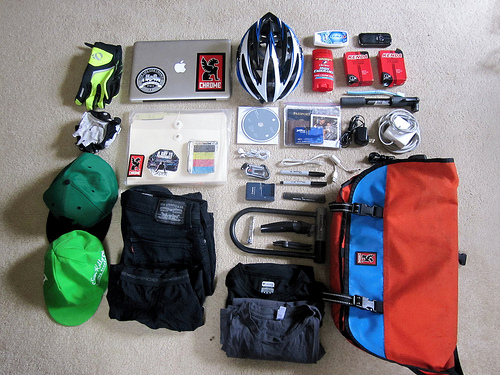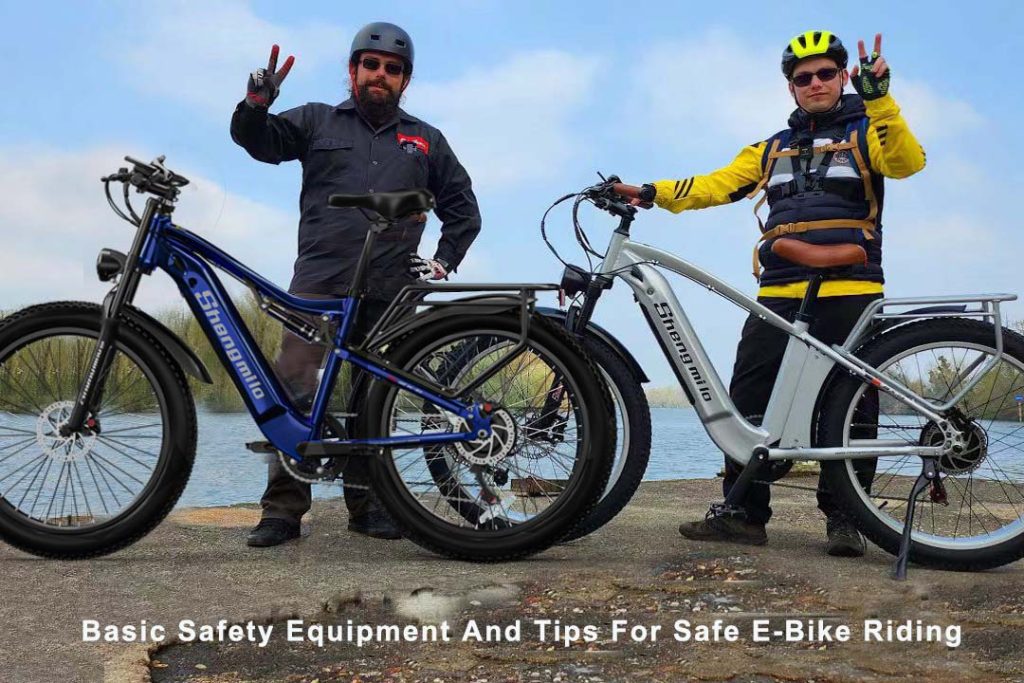Wearing Safety Gear:
- Helmet (must-have)
- Gloves (palm protection)
- Knee pads (for rough terrain)
- Elbow pads (for rough terrain)
- Reflective gear (visibility)

Bike Safety Features:
- Front and rear lights
- Reflectors (pedals, seatpost, and rear rack)
- Bell or horn
- Mirrors (optional)
- GPS device or smartphone mount
Riding Safety Tips:
- Follow traffic rules
- Ride in designated bike lanes
- Use hand signals
- Be visible (wear bright colors)
- Anticipate obstacles
- Ride defensively
- Stay focused (avoid distractions)
Bike Maintenance:
- Regularly check tire pressure
- Lubricate chain
- Adjust brakes
- Check for loose parts
- Schedule professional tune-ups

Additional Safety Items:
- First aid kit
- Basic tool kit
- Spare tube and tire levers
- Pump or CO2 inflator
- Emergency contact information
Smart Cycling Practices:
- Ride with a buddy
- Plan route in advance
- Check weather forecast
- Carry identification
- Stay hydrated
Urban Cycling Tips:
- Be aware of potholes and debris
- Watch for opening car doors
- Use pedestrian crossings
- Avoid riding on sidewalks
- Follow local bike laws
Remember, safety is a top priority when cycling!
Helmet Safety
- Choose a helmet that fits snugly
- Ensure it has a certification sticker (e.g., CPSC, Snell)
- Replace helmet every 3-5 years or after a crash
- Wear helmet level and centered
Night Riding Safety
- Use front and rear lights (white and red)
- Wear reflective gear (vest, arm/leg bands)
- Increase visibility with bright colors
- Slow down and use extra caution
Group Riding Safety
- Communicate with hand signals and verbal cues
- Ride in a pace line or single file
- Maintain safe distance (2-3 bike lengths)
- Be aware of surroundings and road conditions
Bike Maintenance
- Regularly check tire pressure and brakes
- Lubricate chain and pivot points
- Adjust derailleurs and brakes
- Schedule professional tune-ups
Road Hazards
- Watch for potholes, cracks, and debris
- Avoid riding near parked cars
- Be cautious of gravel, sand, and oil
- Use caution on wet or icy roads
Emergency Procedures
- Know basic bike repair (flat tire, chain break)
- Carry a first aid kit and basic tool kit
- Have emergency contact information
- Know local bike laws and regulations
Additional Resources
- National Highway Traffic Safety Administration (NHTSA)
- League of American Bicyclists (LAB)
- Bicycle Safety Institute (BSI)
- Local bike clubs and advocacy groups
Would you like more information on a specific topic or have any questions?
Also, here are some safety apps for cyclists:
- Strava
- MapMyRide
- Ride with GPS
- BikeRadar
- Find My Bike (anti-theft)
